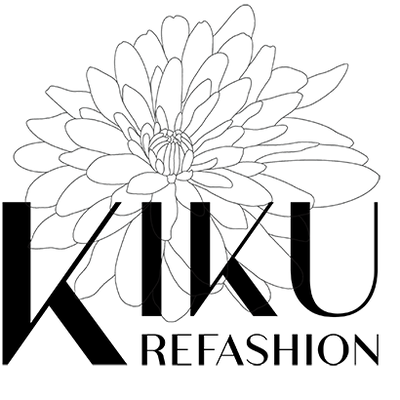January 10, 2023
She was also the “Mother of Civil Rights” in California
by Susu Smythe on January, 2023
Mary Ellen Pleasant (1815-1904)
Who was the first self-made woman millionaire in America? Research will give you different answers. History is written by the victors and the dominant. The lives of important women are less chronicled than those of men. Guinness World Records and many other references credit Sarah Breedlove (1867-1919) as the first. Breedlove was a Black woman who built a business selling hair products for Blacks. However, Breedlove initially worked for Annie Turnbo Malone (1869-1957) who also was a Black woman who created a cosmetic business that served Blacks and who became a millionaire. There is substantial evidence that Mary Ellen Pleasant (1815-1904), another Black woman, was the first self-made woman millionaire in America. Isn’t it interesting that all of the candidates are Black women. Is this an example that “necessity is the mother of invention” or that the low status afforded Black women by white society gave those who dared a greater freedom to forge their own way?
.The recorded details of Pleasant’s life are contradictory. She was probably born into slavery in Georgia but moved to Nantucket at a young age and lived with Quakers who ran a store. Although she could not read or write at the time, she helped in the store and kept the accounts and transactions in her head. This experience was the beginning of her entrepreneurial education. She married James Smith and both were active in the Underground Railroad, helping enslaved Blacks escape by various routes to Canada and other safer locations. When her husband died in 1848, he left her a sizable inheritance. Because her abolitionist work and her assistance to fleeing enslaved were well- known, the passage of the Fugitive Slave Act of 1850 put her at considerable personal risk. The California Gold Rush (1848-1855) and her legal jeopardy motivated her to leave the East Coast and to eventually settle in San Francisco in 1852 where she continued her abolitionist work.
She was fortunate to have capital to invest during a boom business time. She invested her inheritance money with skill and acumen in restaurants, hotels, gold mines, real estate, banks and profitable businesses. She used various strategies to navigate her way in the white man’s business world. She partnered with a white man named Thomas Bell; their investments together were reportedly worth $30 million dollars which would be the equivalent of more than $750 million in today’s dollars. Using the invisibility of servants, she obtained insider information by instructing her restaurant servers to listen carefully to all business discussions and to report back to her all details. Until the very end of her life, she worked as a cook and a housekeeper, traditional work for Black women and did not claim a social standing, notwithstanding her immense wealth.
Pleasant was a courageous supporter of women and Blacks. She continued her abolitionist work in San Francisco, creating the west coast Underground Railroad. She may have contributed the large sum of $30,000 to help finance John Brown’s insurrection at Harper’s Ferry; her grave marker includes the phrase “Friend of John Brown”at her request. She probably sheltered Archy Lee in 1858 while the courts considered his legal status as a free black in California but a run away slave from the South in nationally followed litigation. In 1866, she sued the San Francisco street car company’s refusal to transport Blacks. The suit was settled by the company agreeing to provide service to Blacks. She brought a second suit where she won a favorable judgment that was affirmed, other than the amount of her damages, by the California Supreme Court in 1868 that ended racial segregation in public conveyances. She is credited for causing the California legislature to abolish the statute that prohibited a Black from giving testimony in court. She funded a lawsuit brought by a woman who alleged that she had a marriage contract with an influential man who was paying the woman $500 per month for her company. It was a lawsuit that gained the attention of the nation and the national press gave her disparaging coverage which may have impacted how written history treated her until recently.
“Thomas Bell” Mansion on Octavia and Bush Street
Pleasant’s arrangements with Thomas Bell were unconventional, at best. Around 1870, Pleasant bought a tract of land that covered two blocks in San Francisco and constructed a 30 room mansion in which she lived as did Thomas Bell, his wife and children. Ostensibly, she was the housekeeper for the Bell family. This arrangement lasted until he died in 1892 leaving a will that did not mention Pleasant or attempt to sort out their intertwined investments. Bell’s wife sued Pleasant, claiming that everything belonged to Bell. The lawsuit over the Pleasant/Bell commingled investments was unresolved when Pleasant died in 1904.
Comparing her to Harriet Tubman, W. E. B. Du Bois wrote in his 1924 book “The Gift of Black Folk” that Pleasant was “quite a different kind of woman and yet strangely effective and influential.” He added: “Here was a colored woman who became one of the shrewdest business minds of the State. She anticipated the development in oil. She was the trusted confidante of many of the California pioneers such as Ralston, Mills and Booth, and for years was a power in San Francisco affairs.”
What an amazing life–born in slavery to becoming a millionaire community “power” during a period of time when Blacks and women faced so many societal obstacles.
https://www.nytimes.com/interactive/2019/obituaries/mary-ellen-pleasant-overlooked.html
https://en.wikipedia.org/wiki/Mary_Ellen_Pleasant
http://www.mepleasant.com/story.html
Mary Ellen Pleasant - Gold Chains: The Hidden History of ...
https://www.aclunc.org › sites › goldchains › explore › m…
https://www.womenhistoryblog.com/2013/01/mary-ellen-pleasant.html
April 17, 2023 1 Comment
March 23, 2023
March 10, 2023
